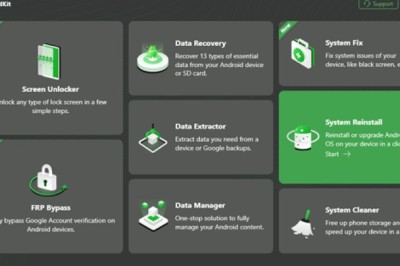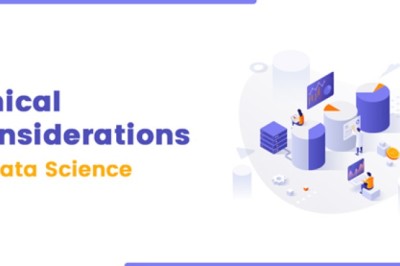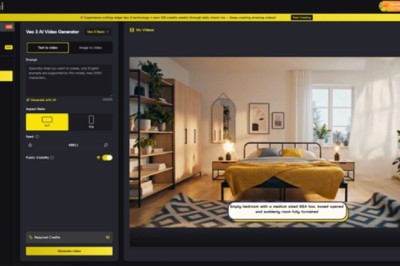views
Photo Credit: Chris Liverani, Unsplash
These days, the information you provide can easily be skimmed over; we’re used to quickly scrolling through to see what catches our attention. That’s where data visualization comes in handy. This guide will help you understand what data visualization is, how to use helpful tools like infographics (and even website themes), benefits for your internal operations, and benefits for marketing. Let’s get started!
What is data visualization?
Data visualization allows you to translate information into a visual context. Not only are charts, graphs, and the like easier to understand and absorb, they can help you identify important patterns and trends in your business. It can also simplify data values, promote understanding of them, and finally, communicate important concepts and ideas.
It all boils down to how our brains work. Treehouse Technology Group explains that while our visual perception is very quick and efficient, our cognition (thinking) is slower and less efficient. Data visualization allows us to shift the balance of the two — thinking and seeing — more toward the visualization side. This takes advantage of our eyes and the speed of seeing.
In layman’s terms, data visualization lets people absorb information much faster and more easily.
What are examples of data visualization tools?
There are all kinds of visualization tools. Bullet graphs, pie charts, bar graphs, infographics, column charts, line graphs, and heatmaps are among the most common forms. We see them every day in every form of media. From television to newspapers to textbooks, data visualization is everywhere.
Some may shy away from data representation because, frankly, it’s much easier to just type it all down in a document, email, or slideshow. Fortunately, the internet offers all kinds of tools that can help. Check out this free infographic maker from Adobe, for instance. Use a free template to create your own customized infographic, personalizing it with your brand logo, unique background, and other designs.
What are the benefits of using data visualization in internal operations?
When using any kind of new tool, it all comes down to the benefits. With data visualization, the first positive elements to consider are those within your company. According to DataProt, some of the most important benefits are:
- Identify inconsistencies and mistakes — Consider this a connection between operations and results. When these connections are made, you can create metrics that expose any inconsistencies and/or mistakes in data.
- Cover massive amounts of data at once — Rather than going item by item with long, informational documents, data visualization lets you provide large amounts of information practically in the blink of an eye.
- Better team communication — Whether you’re in a meeting or sending out a weekly report, using data visualization tools allows your workers to see and understand necessary data easily. This allows them to better perform their jobs and communicate not just with you, but with each other.
As you implement data visualization into your company’s practices, be willing to make adjustments. For example, your workers may inform you that they better understand through infographics than line graphs, so be willing to change things as needed.
What are the benefits of using data visualization in marketing?
The other fantastic benefit of using data visualization is its use in marketing. It engages the audience by appealing and engaging them. When done well, it can help you get your message across more effectively and help viewers better understand the facts you’re looking to convey.
When it comes down to it, data visualization helps change the raw data your systems have collected into something far more useful and actionable. It allows you to improve your campaigns and recognize opportunities. By setting up your systems to automatically use visualization, you can more effectively track your marketing processes and thus, improve both strategies and sales.
Data visualization will become a vital component of your business plan once you’re willing to make the necessary changes. By understanding what it is and using helpful tools like infographics, you’ll reap the benefits on both your internal operations and marketing strategies.






















Comments
0 comment